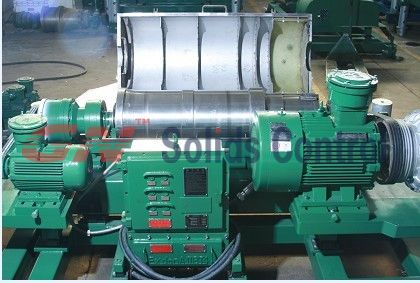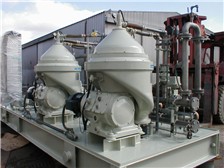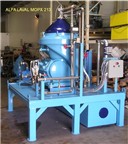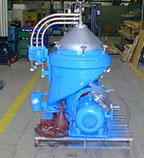The first commercial enrichment plant built in the U.S. can begin commercial operations
 Anyone who thinks there isn’t going to be a nuclear renaissance in the U.S. needs to take a look at the multi-billion bet placed by Urenco at the Louisiana Energy Services plant in Eunice, NM.
Anyone who thinks there isn’t going to be a nuclear renaissance in the U.S. needs to take a look at the multi-billion bet placed by Urenco at the Louisiana Energy Services plant in Eunice, NM.
The NRC said in a statement it completed the readiness review of the Louisiana Energy in Lea County, N.M., and concluded that the facility can begin operation of the first cascade under its NRC license. A cascade is a series of rotating cylinders using centrifugal force to separate uranium isotopes.
LES CEO Gregory Smith told AP NRC’s approval is a “turning point” for the nation’s nuclear industry. The plant has contracts with Duke, Exelon, Dominion, and Progress Energy, among others, to make fuel for their reactors.
According to a report in Fuel Cycle Week for June 3, NM Governor Bill Richardson said at a ribbon cutting ceremony, "Urenco always kept their word on what they were going to do and what their timelines were."
Demand for nuclear fuel project to increase
At the full operational capacity the $2 billion plant will produce about 3 million SWU of enriched uranium a year or about 25% of current demand in the U.S. market. Demand for enriched uranium is likely to increase over the next decade which is why Urenco amended the NRC license to be able to produce up to 6 million SWU.
There are 104 operating nuclear reactors in the U.S. The NRC currently has 13 license applications pending for new reactors. According to the Department of Energy’s Nuclear Power Deployment Scorecard for June 2010,
- Nine utilities have ordered large, long-lead nuclear component forgings from three reactor vendors.
- Four Engineering, Procurement, and Construction Contracts signed (Vogtle, V.C. Summer, STP, and Shearon Harris).
- TVA resumed construction of Watts Bar 2; construction permits reinstated for Bellefonte 1 & 2.
Additionally, in 2013 the current Megatons-to-Megawatts program that blends down Russian HEU will come to an end. The program, managed by USEC, currently provides up to half the nuclear fuel used by U.S. reactors.
License information
 The LES URENCO USA Facility was granted an NRC license in June 2006, and the company began constructing the site’s buildings, centrifuges and security structures. The license allows LES to enrich uranium up to 5% U-235 for use in the manufacture of nuclear fuel for commercial power plants.
The LES URENCO USA Facility was granted an NRC license in June 2006, and the company began constructing the site’s buildings, centrifuges and security structures. The license allows LES to enrich uranium up to 5% U-235 for use in the manufacture of nuclear fuel for commercial power plants.
The NRC said the readiness review takes into account safety systems, training, operating procedures, security and other aspects of facility operation.
“Our inspectors have examined not only the construction and testing of systems, but the additional factors, including training and procedures,” said NRC Region II Administrator Luis Reyes. “Even after the first centrifuge is started, we will continue to inspect the operation to ensure the protection of people and the environment in the area.”
As a result of the green light from the NRC, the plant will begin accepting operational delivery of uranium hexafluoride (UF6) feed stock.
LES is a subsidiary of URENCO, a company that has been using centrifuge technology in Europe for more than 30 years. The Urenco USA facility (formerly the National Enrichment Facility) is the first to use Urenco's European centrifuge technology in the US. The same types of centrifuges are expected to be used in Areva’s Eagle Rock Facility.
Other U.S. uranium enrichment plants
There are three other uranium enrichment plants under development in the U.S. They are Areva’s Eagle Rock Enrichment Plant near Idaho Falls, ID; USEC’s American Centrifuge Facility near Piketon, OH; and GE-Hiachi’s Laser Enrichment project at Wilmington, NC.
Areva’s plant recently received a $2 billion loan guarantee from the federal government. USEC said in May it will re-submit its application for a loan guarantee later this year. Neither Urenco nor GE-Hitachi have applied for loan guarantees.
Idaho Samizdat is a blog about the political and economic aspects of nuclear energy and nonproliferation issues. It covers the nuclear energy industry globally. Additionally, the blog has regional coverage on uranium mining in the western U.S. and Canada Link to original post
source: theenergycollective.com












